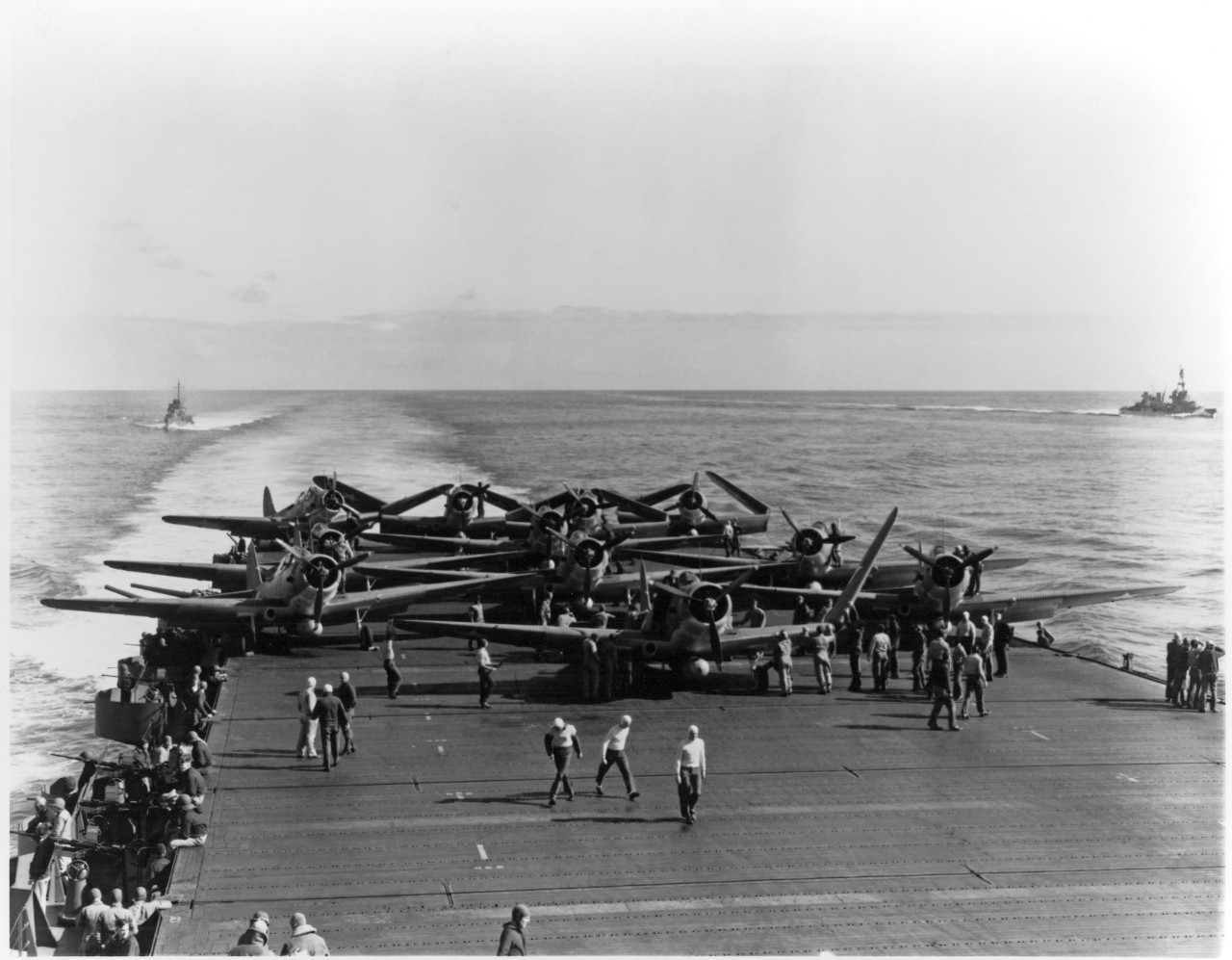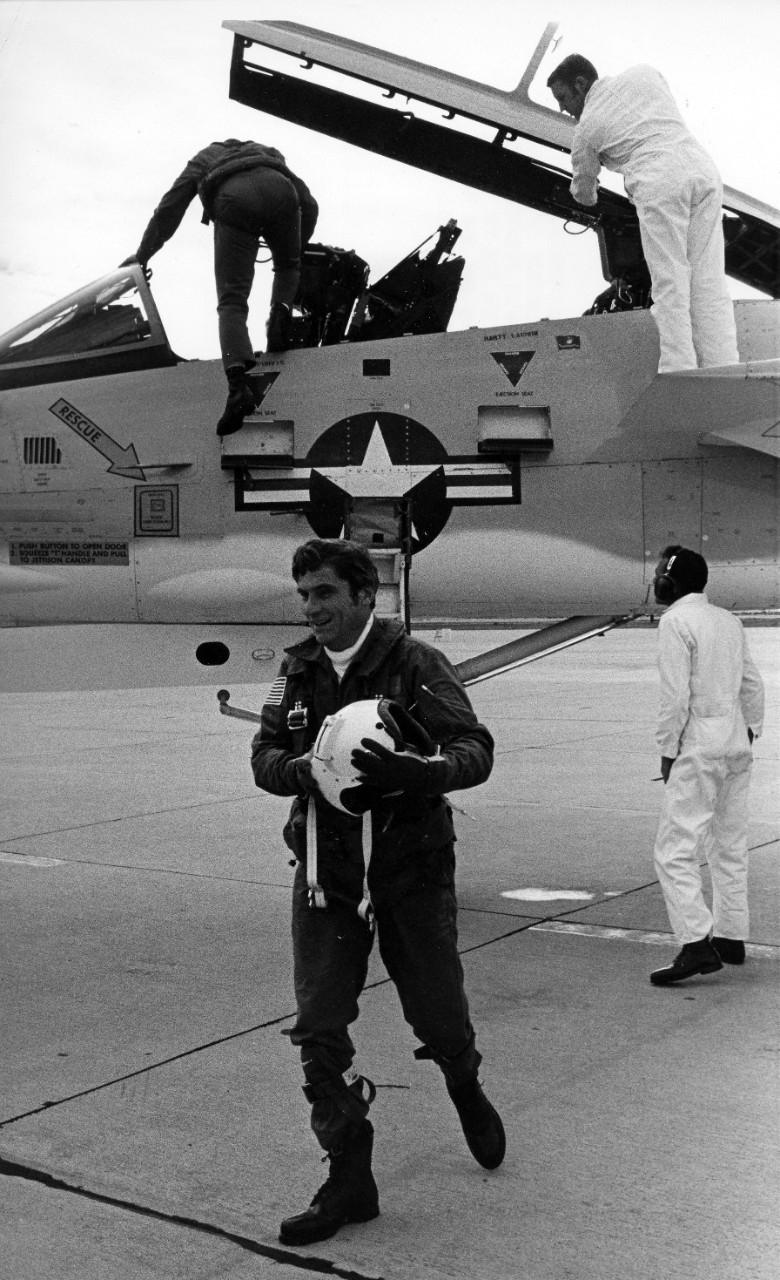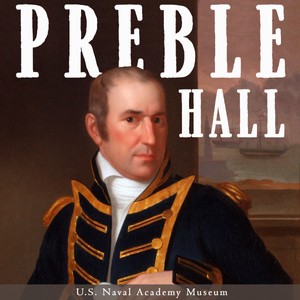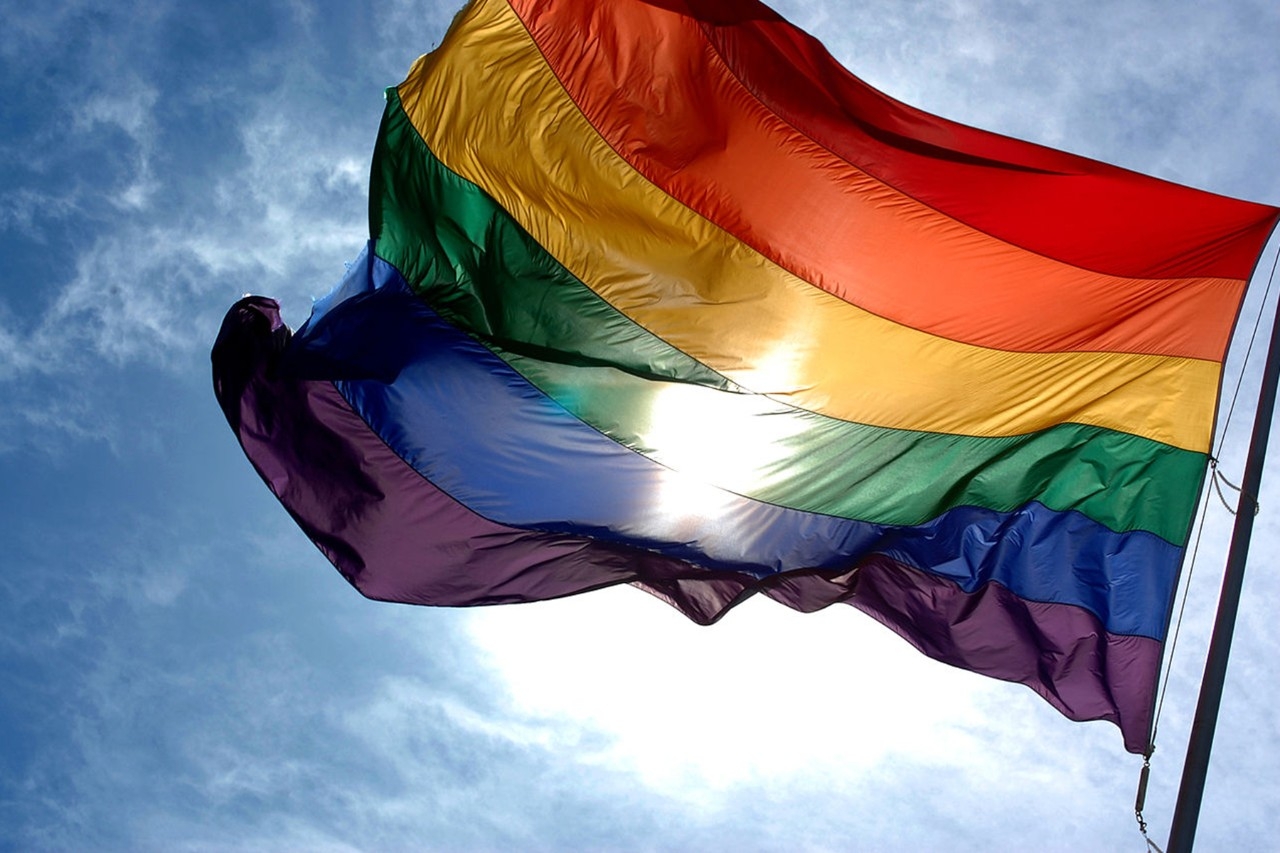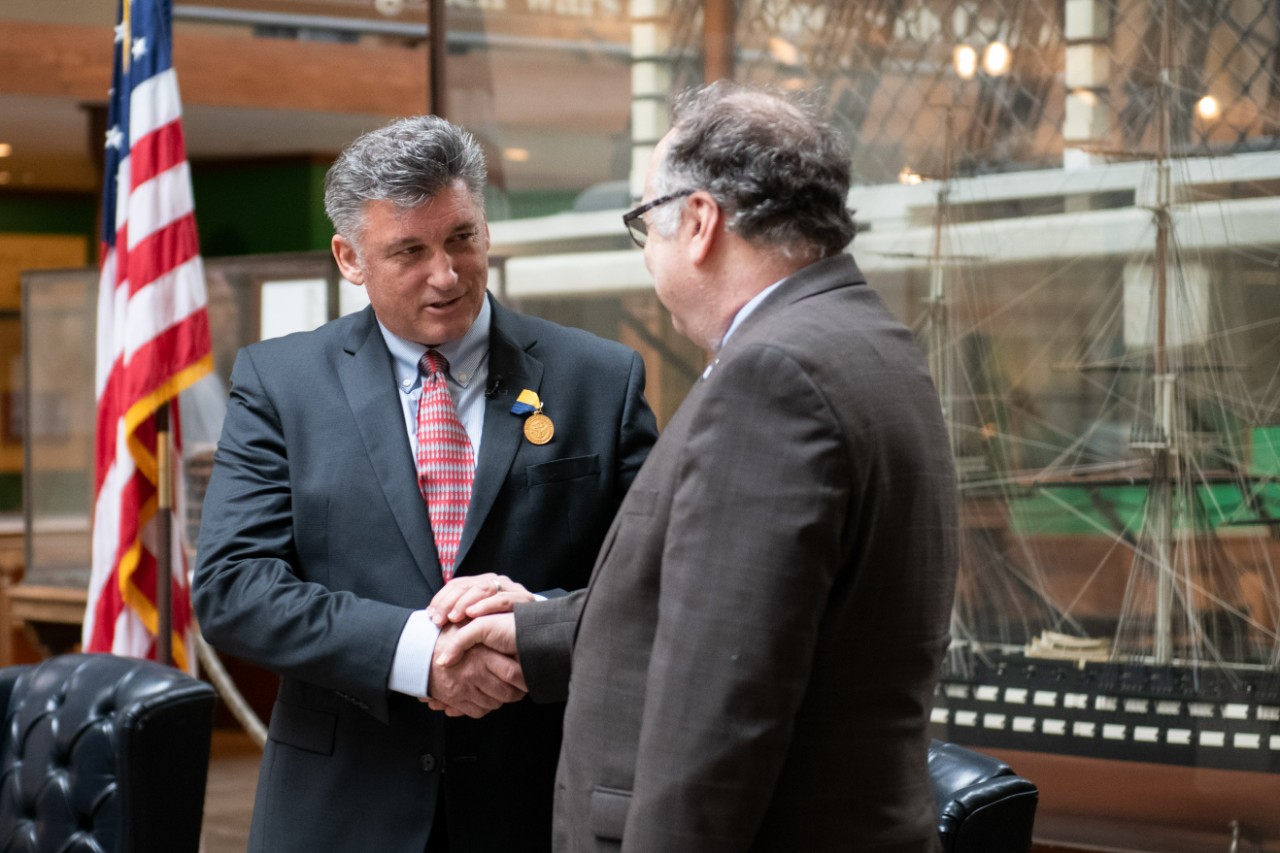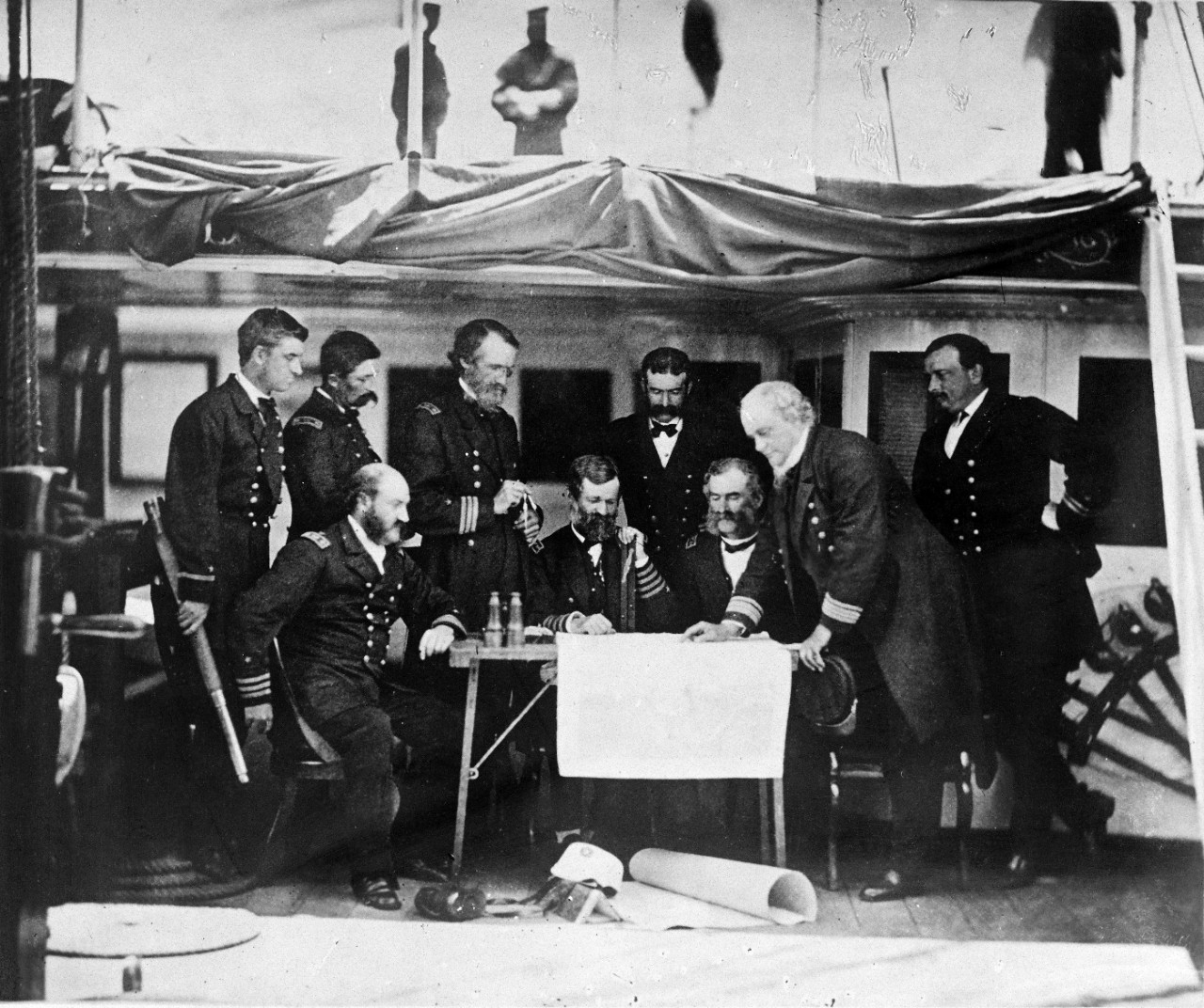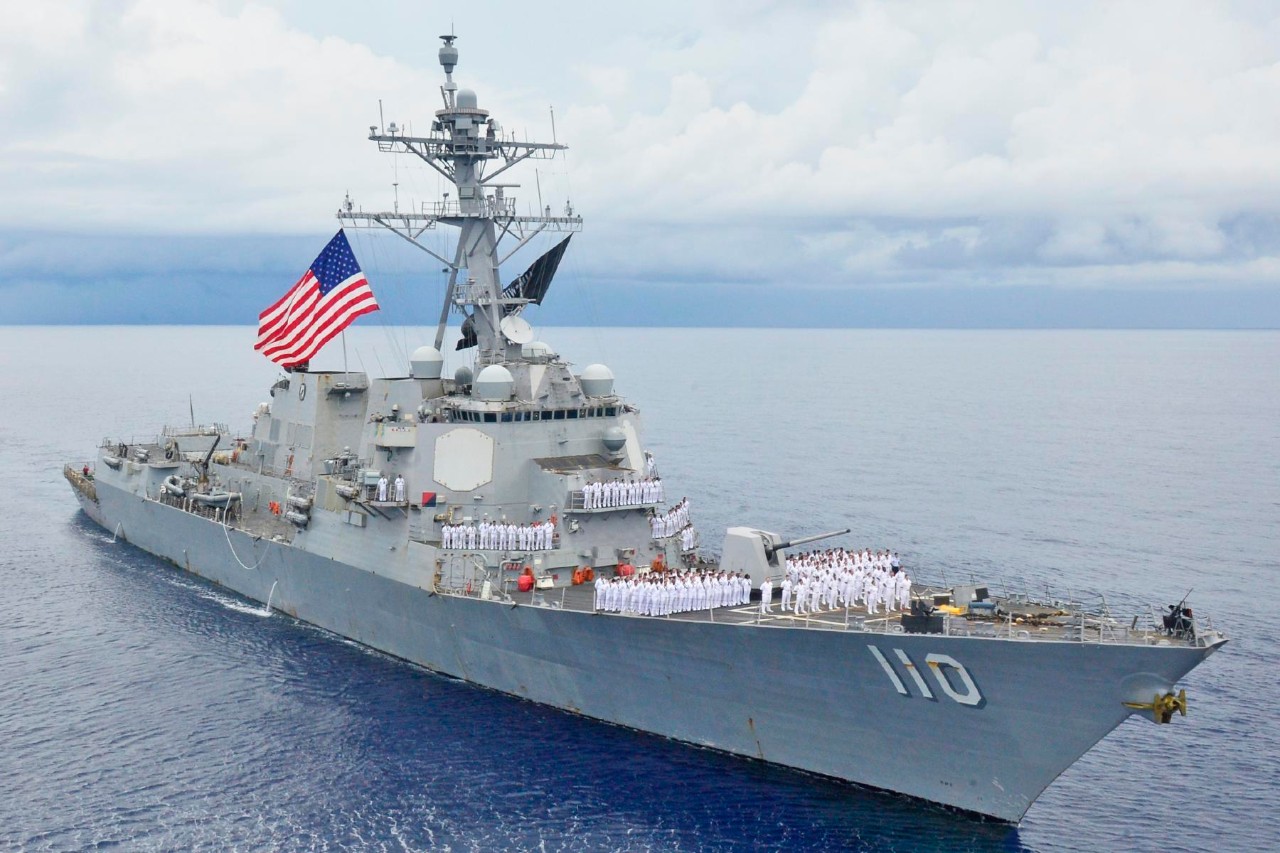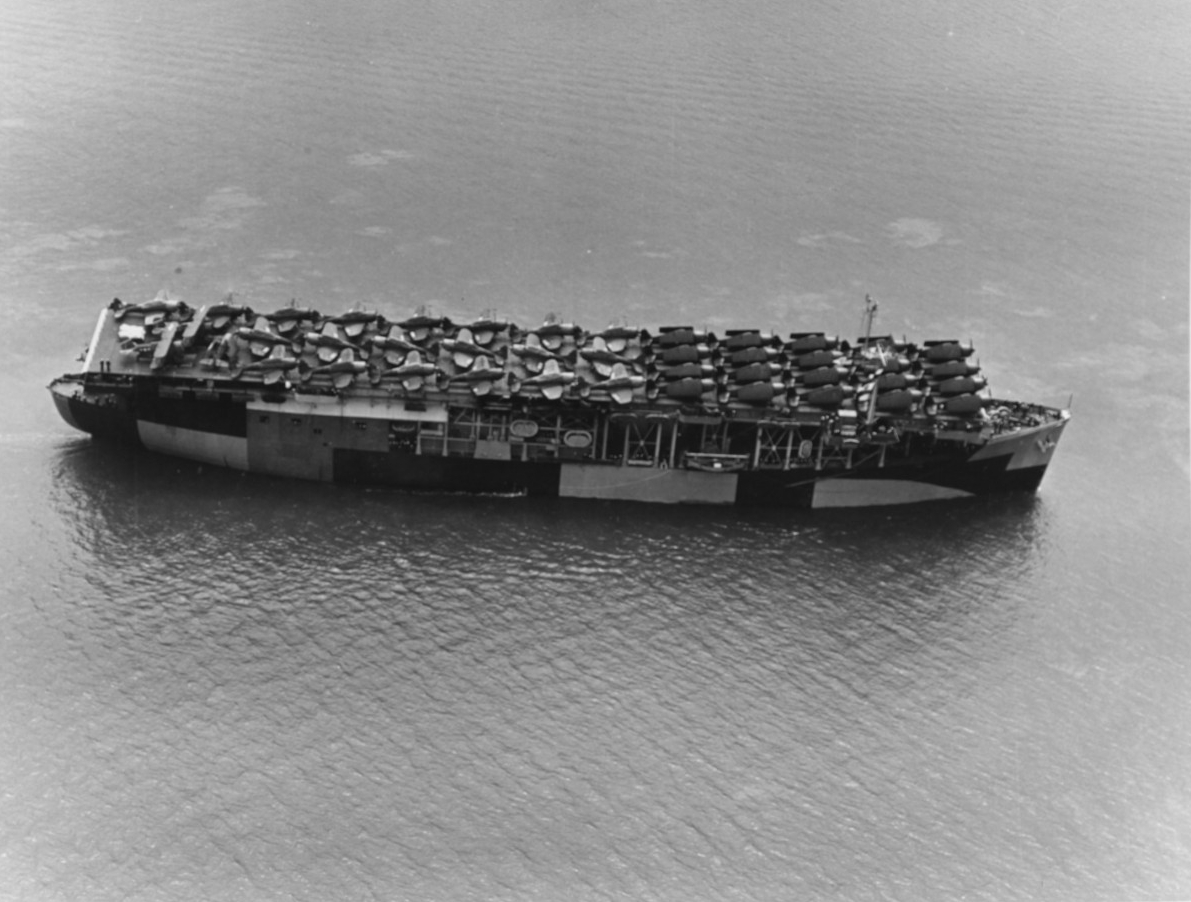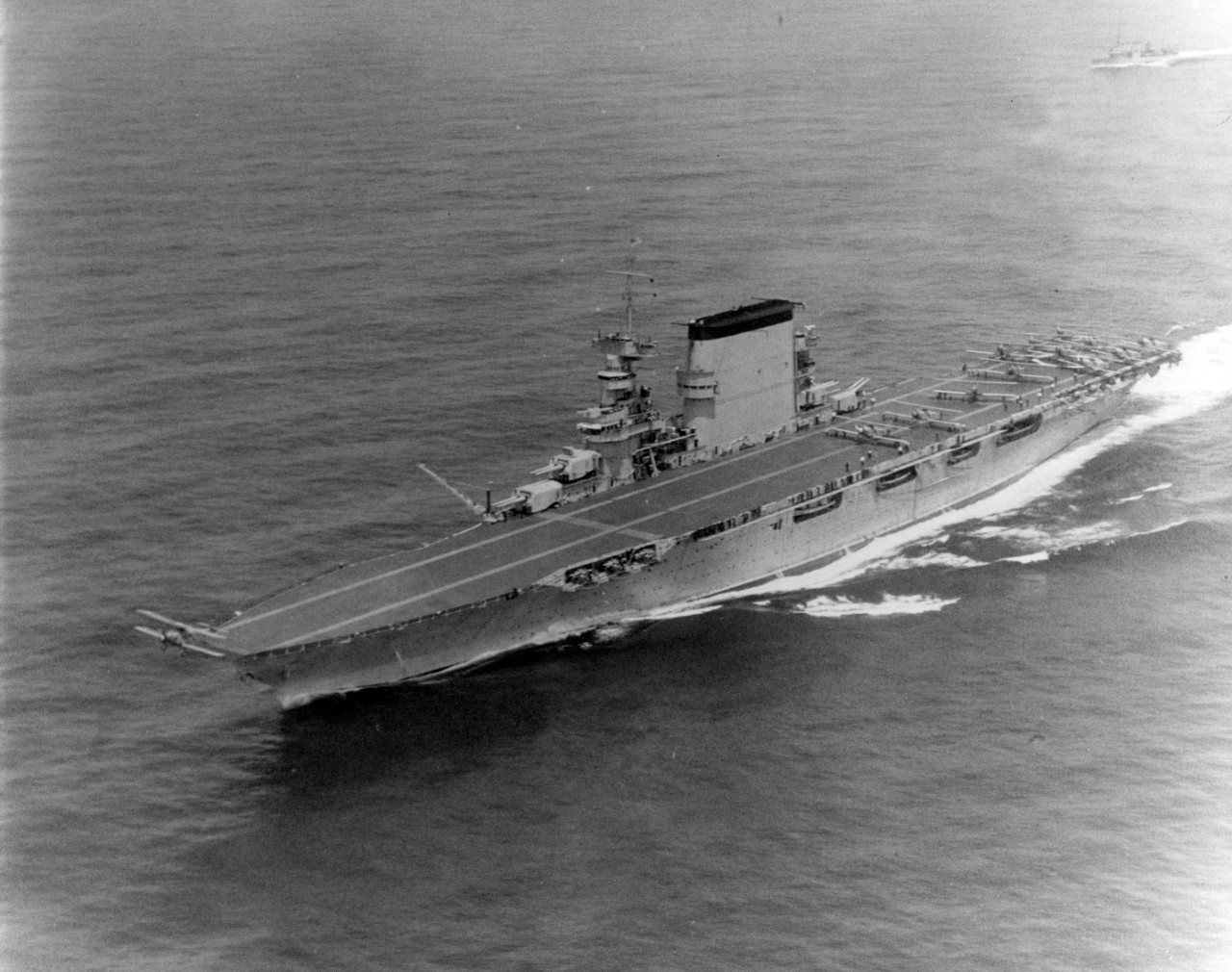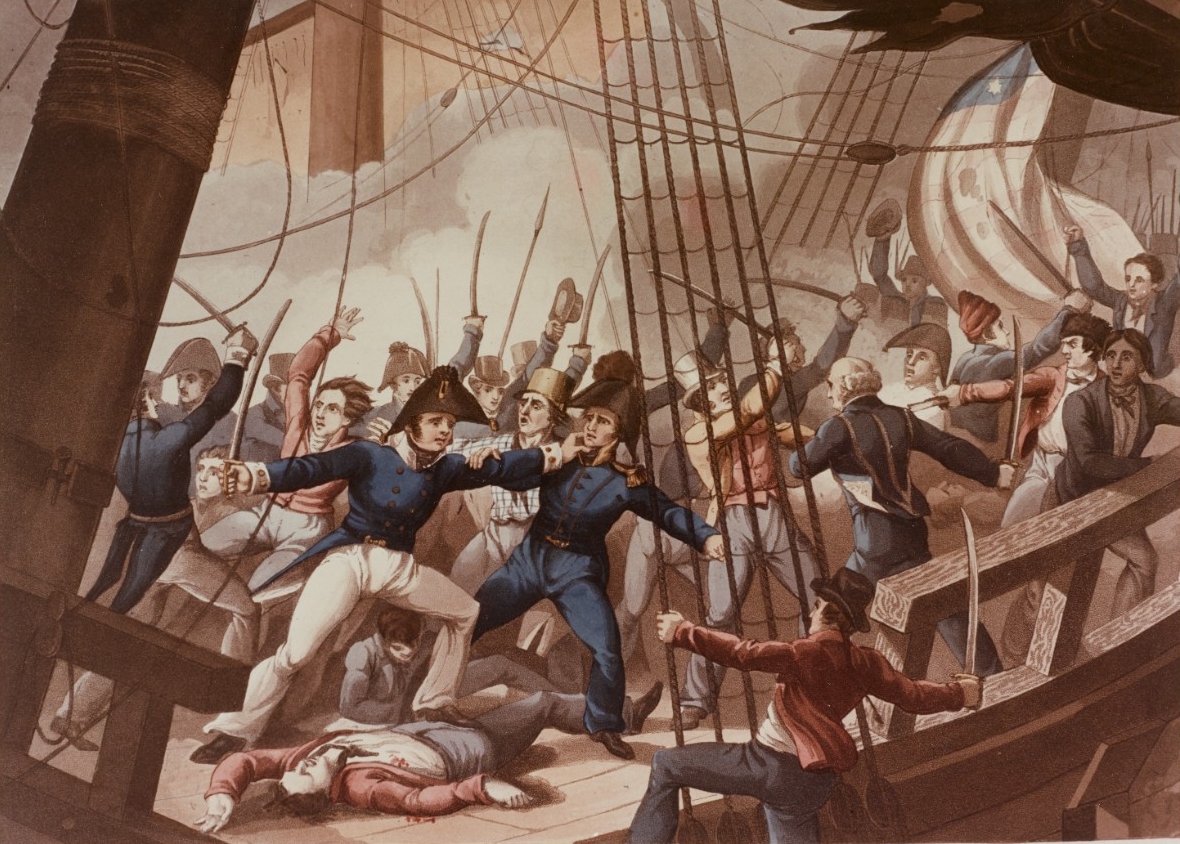Compiled by Brent Hunt, Naval History and Heritage Command’s Communication and Outreach Division
Battle of Midway 79th Anniversary
In early 1942, cryptologists under then-Cmdr. Joe Rochefort at Pearl Harbor’s Station Hypo detected Japanese references to a pending operation against an objective designated “AF.” Fleet intelligence officer Capt. Edwin Layton and Rochefort were able to confirm “AF” meant Midway. From June 3–7, 1942, the U.S. Navy was engaged in one of the most decisive naval battles of World War II. During the battle, naval aviators—such as Torpedo Squadron 8 pilot Ensign George Gay; Torpedo Squadron 8 commanding officer Lt. Cmdr. John C. Waldron; and the commander of the Enterprise Air Group, Lt. Cmdr. Clarence Wade McClusky Jr.—demonstrated skill and boldness against great odds. At the heart of every victory in naval history is the sacrifice and valor of American Sailors. Intelligence set the stage for victory, but the Battle of Midway was fought and won by the skill, courage, and blood of those who flew the planes, manned the antiaircraft batteries, and peered through the periscopes. On June 4, 1999, the chief of naval operations designated the Battle of Midway and the Navy’s birthday for special commemoration with the issuance of NAVADMIN 164/99.
Passing of Former SECNAV John Warner
Former Secretary of the Navy and five-term U.S. senator from the Commonwealth of Virginia John W. Warner passed away on May 25 at his home in Alexandria, VA. He was 94. Warner was born on Feb. 18, 1927, in Washington, DC. His father, John, was a physician who served during World War I, and his mother, Martha, served as a Red Cross volunteer during the war. At the age of 17, he asked his parents’ permission to join the Marine Corps, but his father insisted he join either the Navy or the Army Air Force. In late 1944, Warner joined the Navy. On V-E Day, he was a student at the Great Lakes Training Center studying electronics. He left the Navy in July 1946 to attend school in Virginia before joining the Marine Corps Reserve and was commissioned as a second lieutenant upon graduating from college in June 1949. While studying at the University of Virginia Law School, he was called to active duty to serve during the Korean War. He attained the rank of captain and remained in the Marine Corps Reserve until 1961. On Feb. 11, 1969, he was appointed Under Secretary of the Navy by President Richard Nixon, and he was subsequently sworn in as Secretary of the Navy on May 4, 1972. For more on Warner’s life, read the article by NHHC Director Sam Cox at NHHC’s website.
Preble Hall Podcast
In a recent naval history podcast from Preble Hall, the U.S. Naval Academy’s History Department continues with the second installment of This Human Life, which is about the remarkable life of a 19th century American adventurer, who after nearly inciting a war between the United States and the Netherlands, traveled to the Kingdom of Hawaii and tried to start a new religion. The Preble Hall podcast, conducted by personnel at the U.S. Naval Academy Museum in Annapolis, MD, interviews historians, practitioners, military personnel, and other experts on a variety of naval history topics from ancient history to more current events.
LGBT Pride Month
June is Lesbian, Gay, Bisexual, and Transgender (LGBT) Pride Month. Initially established as “Gay and Lesbian Month” by President Bill Clinton in 2000, LGBT Pride Month recognizes the accomplishments and contributions of the LGBT community to the military and civilian sectors. The Department of Defense began observing LGBT Pride Month in 2012. For more, visit the Naval Service of Lesbian, Gay, Bisexual, and Transgender personnel historical policy overview at NHHC's website.
Ocean Explorer Receives Distinguished Public Service Award
Tim Taylor, an ocean explorer and the founder and president of the Lost 52 Project, continues to remember and honor those lost in submarines. During World War II, 52 went on eternal patrol. To recognize his work, NHHC Director Sam Cox presented the Navy Distinguished Public Service Award to Taylor during a ceremony May 24 at Washington Navy Yard. During his remarks, Cox explained the significance of the award, emphasizing the impact of Taylor’s work in founding and leading the Lost 52 Project, through which Taylor has discovered six submarines. “Tim Taylor’s work and service is of immense value to the United Stated Navy,” said Cox. “Through his work, Taylor has contributed not only to the legacy of Sailors’ heroism and sacrifice, but also to the families of these lost Sailors by providing answers and closure to what happened to their loved ones.” The Lost 52 Project’s work help honor the men who served on the submarines, their memory, and their mission. “Every man we find is connected to a family, and each family has lived with the hope that one day they will know the final resting place of their loved ones,” said Taylor during the award ceremony. “It is our [Lost 52 Project] hope, and it is my hope, that the work and these discoveries are the peace and closure to these families.” For more, read the article by MC2 Abigayle Lutz at NHHC’s website.
Korea Fires on John Rodgers Squadron—150 Years Ago
On June 1, 1871, during the Korean expedition, two ships in the squadron under command of Commodore John Rodgers, in frigate Colorado, were fired on by shore batteries from two Korean forts. When no explanation was offered, a punitive expedition destroyed the forts and inflicted heavy casualties on the Koreans nine days later. The squadron was carrying Frederick Low, U.S. foreign minister to China, who was sent to negotiate trade with Korea. The United States had hoped that the strong show of force would persuade the Koreans to the negotiating table, but they refused. In fact the incident led Korean royalty to strengthen their policy of isolation. After the failed negotiations, Rodgers’ squadron sailed for China on July 3. In 1876, Korea established a trade treaty with Japan and treaties with European countries and the U.S. soon followed.
William P. Lawrence Commissioned—10 Years Ago
On June 4, 2011, guided missile destroyer USS William P. Lawrence was commissioned at the Port of Mobile, AL. The ship is named for naval aviator Vice Adm. William Porter Lawrence, who was shot down over North Vietnam in June 1967 and held as a prisoner of war until March 1973. He received the Silver Star for the mission in which he was shot down. He was awarded the Distinguished Service Medal, the country’s third highest military award, for his inspirational leadership of fellow POWs while under constant pressure and mistreatment from his captors during the Vietnam War. His namesake destroyer, with a highly trained crew hailing from across the United States, provides multi-mission offensive and defensive capabilities to the U.S. surface fleet in support of national policy. William P. Lawrence serves as a multi-mission platform that can operate either independently or as part of surface, expeditionary, or aircraft carrier strike group in air, surface, and undersea threat environments.
Long Island Commissioned—80 Years Ago
On June 2, 1941, the first aircraft escort vessel, USS Long Island, was commissioned. A little more than a year later, after conducting experiments to prove the feasibility of aircraft operations from converted cargo ships, the ship reached San Francisco, CA, where it joined Adm. William S. Pye’s four battleships that provided air cover while at sea to reinforce Adm. Chester Nimitz's forces during the Battle of Midway. The “baby flattop” also supported the landings on Guadalcanal in August 1942. For the next year, the escort carrier trained carrier pilots at San Diego, CA, an unglamorous but vital contribution to the war effort. Long Island was reclassified CVE‑1, on July 15, 1943. During 1944 and 1945, she transported airplanes and their crews from the west coast to various outposts in the Pacific. After V‑J Day, Long Island revisited many of the same bases while transporting Soldiers and Sailors back home during operation “Magic Carpet.” Long Island decommissioned March 26, 1946, at the Puget Sound Naval Shipyard.
Webpage of the Week
This week’s Webpage of the Week is new to NHHC’s notable ships. USS Lexington was commissioned on Dec. 14, 1927, with Capt. Albert W. Marshall in command. The ship was originally to be built as a battle cruiser, but was later authorized to be completed as an aircraft carrier. On May 8, 1942, during the Battle of the Coral Sea, a Lexington plane reported the location of Japanese heavy cruiser Shokaku, and a strike was immediately launched that caused heavy damage to the Japanese heavy carrier. By 11 a.m., the enemy had penetrated to within range, and 20 minutes later, Lexington was struck by a torpedo to port. Seconds later, a second torpedo hit to port directly abreast the bridge, and at the same time, Lexington took three bomb hits from enemy aircraft. The attack caused the ship to list at seven degrees while several fires raged onboard. By 1 p.m., damage control parties managed to get the fires under control and had returned the ship to even keel. Lexington began to move at 25 knots, ready to recover her air group. Then, suddenly, an enormous explosion erupted, caused by the ignition of gasoline vapors below. Again, fires raged out of control on the ship. At 3:58 p.m., Capt. Frederick C. Sherman ordered all hands to the flight deck, because he feared for the safety of the crew below decks. At 5:07 p.m., he ordered “abandon ship!” For more, check out the page today. It contains a short history, suggested reading, blogs, interviews, selected imagery, and much more.
Today in Naval History
On June 1, 1813, HMS Shannon, commanded by Capt. Philip Broke, captured the American frigate Chesapeake, commanded by Capt. James Lawrence off the coast of Boston, MA. During the battle, Lawrence was mortally wounded, but as he was carried below deck, he uttered the iconic phrase, “Don't give up the ship!” although at that point it was too late. Within minutes after Shannon’s crew boarded Chesapeake, the fighting was over and the white ensign of St. George flew over Chesapeake. The Shannon-Chesapeake incident was the bloodiest sea battle of the War of 1812. More than 280 men were killed or wounded by small arms fire. Lawrence, the valiant commander, died while enroute to England. Once Shannon reached Hailfax, on June 6, 1813, he was wrapped in an ensign and buried with full military honors. Chesapeake was then commissioned as HMS Chesapeake by the British Navy before she was sold at an auction in Plymouth, England, to a private buyer.
For more dates in naval history, including your selected span of dates, see Year at a Glance at NHHC’s website. Be sure to check this page regularly, as content is updated frequently.

